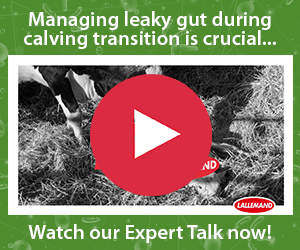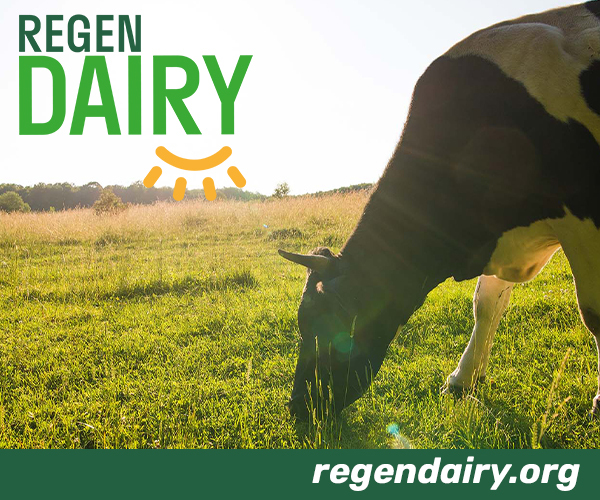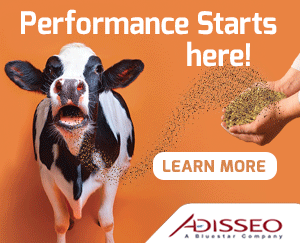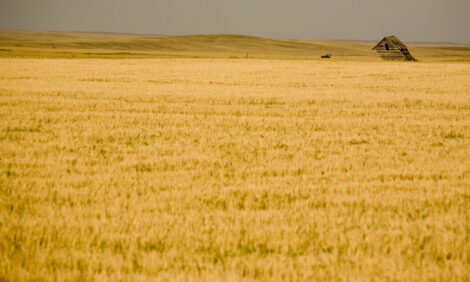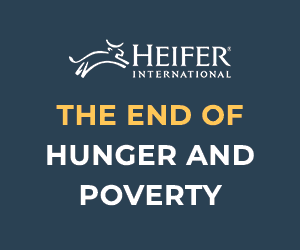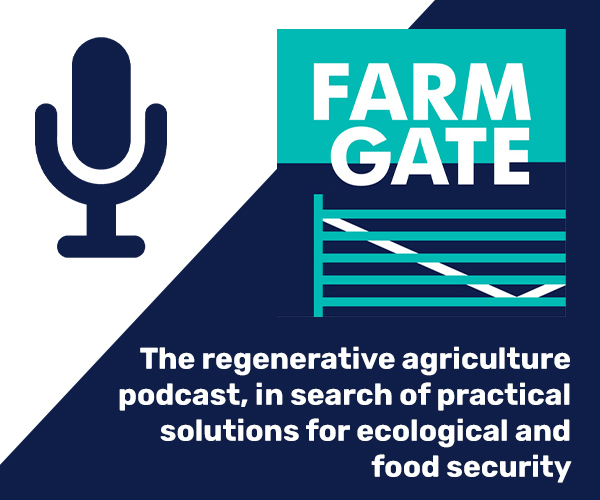



MLA: Weekly Cattle Summary
AUSTRALIA - The following report is a collection of market summaries from the previous week across Australia's territories from analysts at Meat and Livestock Australia (MLA).
Victoria
Numbers jump
Overall yardings at markets reported by MLA’s National Livestock Reporting Service lifted 18% week-on-week to total 13,646 head. The larger markets of Leongatha and Pakenham gained 54% and 10%, respectively, while supply at Camperdown more than doubled to 1,085 head. Numbers at Warrnambool lifted 2% week-on-week, while Shepparton penned 57% more cattle and Colac recorded a much larger yarding of 913 head. The only markets to defy the trend were Ballarat and Wodonga, back 16% and 20%, respectively.
Quality mixed, but competition strong
Most markets reported mixed quality offerings this week. Fewer better quality calves were available in a larger selection of veal at Pakenham, while Shepparton’s offering also comprised of a larger proportion of vealers. Feeder and restocker buyers were operating on suitable lightweight yearling steers at Leongatha, however trade weights were harder to source. Wodonga yarded a few outstanding pens of supplementary fed yearlings, while secondary types saw the best improvements at Bairnsdale.
Grown steers were in very good condition at Ballarat, while Camperdown penned a greater number of bullocks week-on-week. Prices lifted at Pakenham’s very small grown cattle sale as buyers competed strongly to secure numbers, with young cows selling to a premium.
Prices generally dearer
Heavyweight C3 vealer steers to slaughter eased 4¢ to average 201¢, while their heifer counterparts were 1¢ dearer on 190¢/kg. Heavy C3 and 4 yearling steers to processors gained 2¢ to average 185¢ and 189¢/kg, respectively. Medium and heavy weight D3 yearling heifers to the trade lifted 3¢ to 158¢ and 164¢, respectively, while heavyweight C3 lines were up 1¢ to average 167¢/kg.
Heavy C3 grown steers averaged 2¢ better on 180¢, while D3 bullocks were unchanged on 176¢/kg. A large supply of D3 and 4 cows were 6¢ to 8¢ dearer, to average 136¢/kg.
Western Australia
Conditions ease
The dry conditions and hot temperatures continued throughout much of WA, particularly in the southern agricultural districts of the state. Feed and water supplies continue to diminish with calving activity on the increase and the majority of early calving having now already been completed. Conditions in the far north remain reasonable, while there continue to be parts of the Pilbara, Gascoyne and Murchison regions that remain in drought.
Smaller numbers in physical markets
There were lower supplies of cattle seen in physical markets this week, with the long weekend resulting in the cancellation of Monday’s southwest sale. Saleyards saw limited supplies of prime trade and heavy weight steers and heifers penned, while weaner cattle supplies accounted for a reasonable percentage of total numbers. The majority of cattle were sourced from local agricultural regions, with pastoral drafts remaining very limited. The scarce supplies of prime bullocks and export weight steers experienced an increase in local trade demand that created higher overall prices. This was also the case in heavy weight mature heifer sales, but again was partly due to the very limited supplies of these cattle seen in physical markets. The supplies of prime trade weight yearlings were also nominal and as with their heavy weight counterparts enjoyed very strong trade and retail demand.
Demand remains high
Demand for slaughter cattle remains high in the south, with the supplies of all categories, outside of grain finished, continuing to tighten. Demand for weaner cattle continued at high levels this week, despite the decrease in both quality and weight as the feeder, restocker and live export sectors competed for their purchases. There were solid supplies of store cows penned at Muchea this week and these met solid trade and restocker demand, while prime heavy weight cows continued to record very strong and active demand from the local and export processor sectors.
New South Wales
Consignments continue to slip
As seasonal conditions improve across the majority of the state, numbers slipped 13% week-on-week at markets reported by MLA’s NLRS. With some southern parts of the state recording rainfall during the past week, consignments eased 13% at Wagga, while Tamworth defied the lower trends to lift 6% in total. Forbes yarded its lowest number for some time with 414 cattle penned. CTLX Carcoar lost 17% for a total of 1,680 head, as Gunnedah eased 11% week-on-week. Inverell also defied the trend to increase 35%, albeit from low numbers recorded at the previous market. The Hunter markets both recorded lower consignments, with useful follow up rainfall throughout the supply area. Dubbo nearly halved its numbers, as weekend rainfall instilled greater producer confidence around the area. Armidale and Casino trended differently, as Casino gained 30%, with Armidale losing 7% for a yarding of 2,289 head.
Quality remains mixed
Quality on average remained mixed, however the majority of markets reported numbers of supplementary fed prime conditioned younger cattle offered. The younger steers and heifers were represented by similar numbers, as 5,001 steers compared to 4,971 of the heifer portion were yarded. Heavy grown steers suitable for slaughter were again limited in supply with only 439 offered. Cow numbers slipped by 2% for a total of 4,971 yarded, with restockers again active.
Markets trend dearer
Younger vealer steers and heifers selling to both restocker and processor orders trended 3¢ to 10¢/kg dearer, and more in places. Yearling steers lifted 8¢ to the lot feeder orders, as the better end reached a shade over the 200¢/kg range. Prime conditioned yearlings to the butchers also sold to increased competition, as the better muscled pens topped at 218¢/kg. The unfinished yearling heifers to the lot feeders gained 6¢/kg.
Extra northern processor competition boosted the heavy weight grown steer prices by 8¢, as prices reached 194¢, with most selling around the 179¢ to 182¢/kg range. Cows continue to trade at dearer levels, as those to the restockers improved another 10¢ to 12¢/kg. Increased processor competition lifted prices by 5¢ to 8¢, as the plainer D2 pens averaged 110¢/kg. The better finished 3 and 4 scores ranged from 120¢ to 155c¢/kg. Heavy weight bulls maintained firm prices, with the best reaching 168¢/kg.
Queensland
Supply boosts
After rain induced lower supply last week, numbers bounced back, with supply up 53% week-on-week to total 16,261 head. Dalby yardings lifted 11% week-on-week, the highest level since July last year, while Roma store sale throughput more than doubled. Toowoomba Elders and Roma prime yarded similar numbers of cattle. Toowoomba Landmark supplies doubled, while yardings ta Warwick increased 51%, with cows making up nearly 70% of the total yarding.
Stronger feeder demand
Despite the dry weather most of the medium and heavy weight yearling and grown cattle were in condition suitable for slaughter or feed, while there was a large variation in the standard of the young cattle. Quality at Toowoomba Elders was boosted by the Millmerran Show prime cattle exhibit. Feeder buyer activity was strong at all markets this week, while processor demand was solid on suitable lines. Supply of young light weight cattle at Dalby exceeded demand and, as a result, price reductions occurred.
Prices mixed
Most heavy weight calves to restockers were 17¢ cheaper to average 159¢/kg. Light weight C2 vealer steers to feeder buyers were 1¢ lower on 159¢, while their vealer heifer counterparts eased 3¢ to average 135¢/kg. Light weight yearling C2 steers to restockers were 5¢ cheaper on 168¢, while the D2 lines to restockers improved 6¢ to 139¢/kg. Medium weight C3 yearling steers to feeder buyers lifted 2¢ to average 177¢, while heavy weight C3 lines to feed gained 3¢ to 181¢/kg. Light weight D2 yearling heifers to restocker decreased 6¢ to settle on 125¢/kg.
Heavy weight C3 grown steers to feed average 168¢, while the C4 lines to slaughter eased 1¢ to 177¢/kg. Bullocks to slaughter gained 3¢ and averaged 180¢/kg. Medium weight D2 cows to slaughter lifted 3¢ to 112¢, while the similar weight D3 drafts eased 2¢ to 123¢/kg. Heavy weight D4 cows to slaughter decreased 4¢ to average 145¢/kg.
South Australia
Supply at Mount Gambier lifts significantly
Overall supply at markets reported by MLA’s National Livestock Reporting Service eased 3% week-on-week to total 3,147 head. Millicent returned to its fortnightly sale format and did not operate this week, while both Naracoorte and the SA Livestock Exchange recorded lower supply to be 17% and 12% lower, respectively. However these reductions were largely offset by a lift in numbers at Mount Gambier, increasing 37% to 1,958 head.
Quality mixed
Quality was very mixed at all markets this week and reportedly slipped a little at Naracoorte compared to the previous sale. Local and interstate trade and processor demand was strong at the SA Livestock Exchange but erratic at Mount Gambier. Restocker buyers at Mount Gambier were more active than recent weeks and purchased more good quality cattle. Demand for export cattle was slightly stronger at Naracoorte, seeing cows and bulls lift in price and grown cattle hold firm.
Prices vary
Heavyweight B3 vealer steers to processors were 5¢ cheaper, averaging 209¢, while heavy C3 heifers were unchanged on 172¢/kg. Heavy C3 yearling steers to slaughter reached a top price of 193¢ before settling on an average of 180¢, up 11¢/kg. Medium weight C4 yearling heifers to processors were firm on 159¢, while their heavyweight counterparts were 4¢ dearer to average 168¢/kg.
In the export section, a fair supply of C3 bullocks topped at 186¢ and averaged 176¢, up 4¢, while a large number of D3 beef cows averaged 134¢, lifting 5¢/kg.
TheCattleSite News Desk


